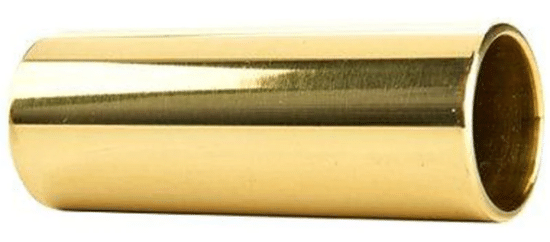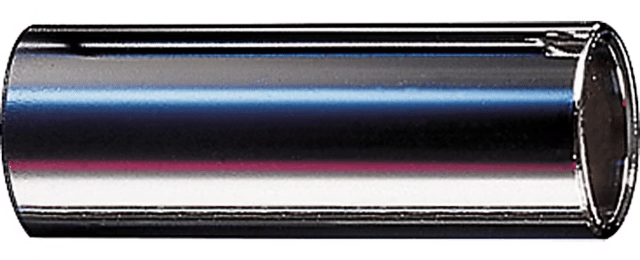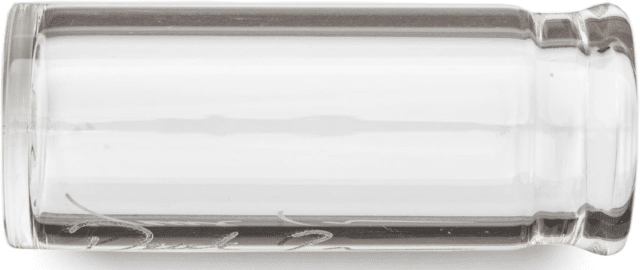The best guitar slides for blues depend on your personal preference and the sound you’re aiming for with your music. Metal, glass, and ceramic slides each bring a unique tone and feel, with metal producing a brighter sound, glass offering a smoother touch, and ceramic providing a warm, rich tone. Experimenting with different slides is key to finding the one that resonates with your playing style and enhances your blues expression.
Key Takeaways

Here are the essential points to remember about slide guitar.
- Choose the Right Slide Material: Metal, glass, and ceramic slides each offer distinct tonal qualities, with metal being brighter, glass offering a softer sound, and ceramic providing a warm, balanced tone.
- Experimentation is Key: Finding the perfect slide requires experimenting with different materials and sizes to see what best complements your guitar and playing style.
- Proper Fit and Grip is Key: Ensuring the slide fits snugly on your finger and doesn’t slip is crucial for control and precision during play.
- Adjust the Guitar Setup: Setting up your guitar with higher action and possibly experimenting with open tunings can greatly enhance slide guitar playability.
- Learn from Experiences: Personal experiences can offer practical insights and inspire the pursuit of the perfect slide guitar sound.
Keep On Reading (Below) To Learn More
The Essence of Guitar Slides in Blues
If you’ve ever been captivated by the soul-stirring cries of blues music, you understand the power of the guitar slide. As a guitar player, I’m always seeking ways to infuse my music with authentic blues expression, and finding the right slide is a fundamental step.
Why Your Slide Choice Matters
Why does slide choice matter? Well, the slide becomes an extension of your fingers, offering a distinct voice within your playing. When correctly used, it can bring your emotional intent to life. Selecting the right materials can help articulate those guttural blues inflections or searing rock riffs.
Choosing a slide isn’t a task to rush. It’s about matching the slide to the music you intend to create. Stay with me as we explore the nuances of metal versus glass slides in the next section, laying out the foundation for an informed choice tailored to your blues journey.
Material and Tone: The Metal Slide Example
The interplay between a slide’s material and the resulting tone it produces is crucial. Take the metal slide: it’s typically harder and heavier, known for delivering a brighter, more resonant sound with substantial sustain—perfect for making your guitar wail and howl in a blues-rock setting.
Metal vs. Glass Slides: Understanding the Differences
Choosing the Right Material for Your Style
When you’re on the hunt for the perfect guitar slide, the material it’s made from is a key factor to consider. Metal and glass are the go-to materials for slides, and each offers unique benefits that can cater to your blues playing style.
The Heft and Brightness of Metal Slides
Metal slides—think brass, steel, or chrome—have a particular heft to them. They’re hard and heavy, which translates to a brighter, often described as “harsher” tone with impressive sustain that can cut right through a band mix.
This makes them a favorite among electric blues and rock musicians who want their solos to stand out. If durability is high on your list, metal slides win hands down. They resist breaking and scratching, making them a practical choice if you’re constantly on the move or play with gusto.
The Warmth and Subtlety of Glass Slides
On the flip side, glass slides provide a contrast in sound and feel. A glass slide offers up a mellower, warmer tone; some say it even possesses a certain “sweetness.” This softer approach can be perfect for quieter, more articulate passages where you want every nuance to be heard. They might not have the same longevity as their metal counterparts, due to being more prone to cracking or chipping, but the unique tone they produce has captivated many blues players.
Making Your Choice
Deciding between the two is ultimately a matter of personal preference and the specific blues tone you’re aiming for. Are you going after the gritty growl of a smoky blues joint, or the soulful wails reminiscent of a dim, candlelit blues bar? Your choice of slide is instrumental in achieving that sound.
How About Ceramic Guitar Slides?
Ceramic guitar slides offer a unique option for blues musicians, striking a balance between the brightness of metal slides and the warmth of glass ones. They are known for their rich, full-bodied tones that can add a distinct character to blues music.
The porous nature of ceramic provides a slightly gritty texture, contributing to a sound that’s both smooth and expressive, with a good balance of sustain and friction. This makes ceramic slides an excellent choice for blues guitarists seeking to explore different sonic possibilities and infuse their music with a unique blend of warmth and clarity.
Comparison Table of Slide Materials
Here is a quick summary of the three guitar slide types.
| Material | Tone Quality | Durability | Price Range | Suitable For (Genre/Style) |
|---|---|---|---|---|
| Metal | Bright, resonant | High | $$ | Blues-rock, Electric blues |
| Glass | Smooth, mellow | Medium | $ | Acoustic blues, Delta blues |
| Ceramic | Warm, rich | Medium-High | $$ | Versatile for various blues styles |
Three Top Metal Slides for the Blues Enthusiast
If you’re drawn to the electric energy of blues and rock ‘n’ roll, the type of slide you choose has a significant impact on your sound. Metal slides are where it’s at for that classic, gritty edge that these genres demand.
Featured Metal Slide for Electrifying Performances
The Dunlop 222 Brass Slide is a popular choice for players seeking that harsh, unapologetic tonal quality. Brass provides a certain heft and sustain to your playing, ideal for cutting through the mix on a loud stage with an electrified band.

Click Here to check price on Amazon.
Exploring the Chrome Slide
For a different flavor of metal slide, consider the smooth character of chrome. It’s a material that gives off a shiny sheen visually and sonically; a chrome slide can help you emulate the piercing styles of blues legends like Joe Bonamassa.
The Dunlop 220 Chromed Steel Slide is a classic pick, known for its lightweight feel and comfort. It’s perfect for guitarists who want to play speedy licks without the slide feeling like an anchor on their finger.

Click Here to check price on Amazon.
Select the metal slide that caters to your preferences in weight, comfort, and tonal output. Experimentation is key, and it’s worth trying a few to find your ideal match.
The Glass Slide Choice: The Dunlop DT01 Derek Trucks Signature Blues Bottle Slide
The Unique Appeal of Glass Slides
Let me highlight why the glass option shouldn’t be overlooked by contemporary blues slide guitarists. In particular, the Dunlop DT01 Derek Trucks Signature Blues Bottle Slide deserves mention, which can deliver crisp, articulate tones that resonate with the rich heritage of blues.
Why Choose the Dunlop DT01?
The Dunlop DT01 solidifies its place among the finest due to its high-quality glass design, which offers a smooth, fluid feel and a bright yet sweet sound. It’s a significant nod to the traditional bottleneck slides but tweaked for the modern player seeking clarity and precision.
So, if you lean towards a more melodic blues style or simply appreciate the distinct charm of glass, this signature slide might just enhance your playing experience.

Click Here to check price on Amazon.
Considering the Ceramic Slide
The Dunlop Moonshine ceramic guitar slide has unique tonal qualities, offering a warm, rich sound with a smooth, tactile feel that many blues guitarists appreciate. Its ceramic composition provides a distinctive balance between the sharp, bright tones of metal slides and the softer, mellower sounds of glass slides, making it versatile for various styles within the blues genre. The slide’s textured surface allows for better control and grip, enhancing playability and expressiveness.
However, one of the cons of the DUNLOP Moonshine ceramic slide is its fragility compared to metal slides. Ceramic can crack or shatter if dropped, requiring musicians to handle it with care.
Additionally, its unique sound may not suit every guitarist’s preference or every blues style, potentially limiting its versatility for some players. Despite these drawbacks, its unique sound and feel make it a valuable tool for those looking to add a distinct voice to their blues guitar playing.

Click Here to check price a Amazon
Guitar Adjustments for Slide Playing
Raising the Action
Setting up your guitar for slide playing can involve a few specific adjustments to ensure the instrument is optimized for this unique style.
One of the most important changes is to the action, which is the distance between the strings and the fretboard. For slide playing, the action is typically set higher than for standard playing, usually between 1/8 inch to 1/4 inch above the 12th fret. This prevents the slide from coming into contact with the frets, which can cause unwanted buzzing, and makes it easier to achieve clean, clear notes.
String Gauge
String gauge is another consideration for slide guitar setup.
Heavier gauge strings can provide a fuller, more resonant tone that’s well-suited to the bluesy, soulful sound associated with slide guitar. They also tend to vibrate more freely, which is beneficial when the strings aren’t being pressed down to the fretboard.
Tuning
Additionally, many slide guitarists prefer open tunings, such as Open D or Open G, because they allow for full chords to be played with the slide, facilitating a richer harmonic background for the music.
Pickup Height
Adjusting the pickup height can also help in capturing the best sound from the strings’ increased vibration, ensuring the guitar’s output is balanced and clear.
This table summaries the information above.
| Adjustment | Recommendation |
|---|---|
| Action Height | Raise to prevent the slide from hitting the frets. Typically between 1/8″ to 1/4″ above the 12th fret. |
| String Gauge | Consider slightly heavier strings for better sustain and tone. |
| Tuning | Open tunings (e.g., Open D, Open G) are popular for easier chord formation with a slide. |
| Pickup Height | Adjust for optimal response to the increased action and string vibrations. |
My Personal Experience During a Blues Recording Session
One day, during a recording session for my new blues track, I decided to experiment with different guitar slides to find the perfect sound.
I started with a metal slide, but it was too sharp and loud, making it hard to blend with the mellow tunes I was aiming for. Then I tried a glass slide, which was better but still not quite right; it was too soft and didn’t give me the control I needed.
Just when I was getting a bit frustrated, I remembered the ceramic slide I had tucked away in my guitar case. I decided to give it a try, and it was like finding a hidden treasure! The ceramic slide had just the right balance – not too harsh like metal and not too soft like glass. It glided smoothly on the strings, giving me the warm, rich tones I was looking for.
With the ceramic slide, I could express the soulful vibes of my blues music perfectly. It felt like the slide was made just for me and my guitar, and it turned the recording session into a big success.
This experience taught me the importance of experimenting with different slides to find the one that fits not just my style, but also the unique sound of my guitar. Every guitar and player is different, so finding the right slide is all about trying out various types until you find that perfect match that lets your music shine!
Frequently Asked Questions
Here are some of the questions I get asked about guitar slides.
If your question does not appear here, please put it in the comments, and I will get right back to you with an answer.
Can I Use Any Type Of Slide For Acoustic Blues Guitar?
Yes, you can use any type of slide for acoustic blues guitar. However, the choice of slide can affect the sound, so it’s worth trying different materials to see what suits your style and guitar best.
How Do I Prevent My Slide From Slipping Off My Finger?
Choose a slide that fits snugly on your finger. Some musicians also use a bit of grip tape or a similar material inside the slide for added friction.
Is It Better To Use A Heavy Or Light Slide?
It depends on your playing style. Heavy slides offer more sustain and volume, while lighter slides allow for faster playing and more nuanced control.
How Do I Care For A Glass Guitar Slide?
Keep it in a padded case or a secure pocket in your guitar bag to prevent knocks and drops that could chip or break it.
Can I Use A Slide On A Nylon-String Guitar?
Yes, but the softer strings may not respond as well as steel strings, so it might take some adjustment in your technique.
What’s The Best Way To Learn Slide Guitar Techniques?
Start by learning basic slide movements and listening to a lot of slide guitar music. Practice regularly and consider taking lessons from experienced slide guitarists.
How Do I Choose The Right Slide Length?
The right slide length depends on your playing style. Longer slides cover all six strings, while shorter slides allow for more traditional finger fretting alongside slide playing.
Can I Make My Own Guitar Slide?
Yes, many players make their own slides from materials like glass bottles or metal pipes. Just ensure the edges are smooth to avoid damage to the strings or your fingers.
What Is The Best Position For Wearing A Slide?
Most players wear the slide on their ring (3rd) finger, but some prefer the pinky (4th finger) for more fretting freedom. Experiment to see what feels best for you.
How Do I Avoid Unwanted Noise When Using A Slide?
Lightly touch the strings with the fingers behind the slide to mute unwanted noise, and be mindful of your slide’s pressure and angle on the strings.
Do Different Guitar Tunings Affect Slide Play?
Yes, open tunings like Open D or Open G are popular with slide players because they allow for full chords to be played with the slide.
Can Electric Guitar Techniques Be Applied To Slide Guitar?
Many electric guitar techniques, like vibrato and string bending, can be adapted for slide guitar, adding expressiveness to your playing.
How Should I Amplify My Slide Guitar?
Any standard guitar amp will do for electric guitars, but consider using an amp with a good clean channel. For acoustics, a microphone or an acoustic amp works best.
What’s The Difference Between A Slide And A Bottleneck?
“Bottleneck” originally referred to slides made from the necks of glass bottles. Today, the term is often used interchangeably with “slide.”
How Do I Transition Between Slide And Regular Playing?
Practice sliding into and out of notes from regular fretting and develop a comfortable technique for switching the slide on and off your finger if needed.
Can I Use A Capo With A Slide Guitar?
Yes, a capo can be used with a slide guitar to change the key of open tunings without re-tuning the guitar.
What Are Some Essential Slide Guitar Songs To Learn?
Consider starting with classics like “Dust My Broom” by Elmore James or “Statesboro Blues” by Blind Willie McTell to get a feel for traditional slide guitar.
How Do I Avoid Damaging My Guitar’s Neck With A Slide?
Use light pressure when playing with a slide, and ensure your guitar’s action is set up properly to accommodate slide playing without excessive force.
How High Should The String Action Be For Slide Guitar?
The string action for slide guitar is typically set higher than for regular playing to prevent the slide from hitting the frets, usually ranging from 1/8 inch (3mm) to as high as 1/4 inch (6mm) above the 12th fret.
Can I Use A Slide On An Electric Bass Guitar?
Yes, slides can be used on electric bass for unique sounds, though it’s less common than on guitar.
Are There Any Special Strings Recommended For Slide Guitar?
While standard guitar strings can be used, some slide players prefer slightly heavier gauge strings for better sustain and tone.
How Do I Achieve Good Intonation With A Slide Guitar?
Achieving good intonation with a slide guitar involves precise placement of the slide directly above the frets, rather than pressing down between them as with traditional fretting. Practice sliding up to notes and listening carefully to match the pitch. A light touch and a keen ear are crucial, as pressing too hard or misaligning the slide can lead to off-pitch notes. Regularly tuning your guitar and experimenting with different slide materials can also help in finding the best sound for your style.
Putting It All Together For Blues Guitar Slides
Finding the best guitar slides for blues is all about trying different kinds to see what sounds best with your guitar and your style.
Metal, glass, and ceramic slides each give a different sound. Metal slides are loud and bright, glass slides are soft and smooth, and ceramic slides are right in the middle with a warm sound.
I shared a story about finding the perfect ceramic slide during a blues recording session. It showed that sometimes you have to try a few slides before you find the one that feels just right. Remember, what works for one person might not work for another, so it’s important to experiment.
We even talked about how to keep your slide from slipping off your finger and how different slides can change how you play. And we learned that it’s okay to make your own slide if you want to.
The height of the strings, called the action, should be a bit higher for slide guitar, and good intonation, which means staying in tune, is key when playing with a slide.
I encourage you to experiment with different materials and designs, including the revered Dunlop DT01. It may reveal new dimensions in your blues playing and inspire creative paths you have yet to explore.

Here’s a great video from The Washboard Resonators on how to choose a bottleneck slide. Check it out!
What To Read Next ➡ Best Guitar Slides For Beginners – The Essential Guide!
What’s On Your Mind?
Here’s where you get to give me your take on slide guitar! Don’t hold back if you have something to say or there’s a question you need answered. Jump right into the comments section below, and let it rip!
- What’s your go-to guitar slide material, and why do you prefer it for playing the blues?
- Have you ever tried making your own guitar slide? Share your experience and tips!
- What challenges have you faced when learning slide guitar, and how did you overcome them?
- What favorite slide guitar song or riff inspired you to start playing slide? Tell us about it!
- How do you adjust your guitar setup for slide playing for string action and tuning?
- What else is on your mind?
I’m here to help!



I’ve been playing the guitar for a few years now. I’m no pro by any means. But honestly, this is the first time hearing about guitar slides. I was glad I stumbled on your blog post. I’ve learned something new today. Your breakdown of metal vs. glass slides and even throwing ceramic into the mix really opened up a whole new world for me.
But here’s a question that’s been bugging me: With all these options, how do you decide which one to go for without ending up with a drawer full of slides you never use? Is it just trial and error, or are there some telltale signs that one material might suit your style better than the others?
Hi there
I would start with a ceramic slide, which has sound characteristics between a metal and a glass slide. You can always get one of each of the three types, assuming slide guitar playing is for you.
The other approach is to listen to slide guitar players like Derek Trucks, who is a glass slide player, etc., and if you like their sound, do some research on the internet as to the brand and model slide they use.
Rock On!
John
Hey John,
Thanks for the insightful article on guitar slides for blues. As a guy who wishes he could play the guitar (I had a stroke at birth which affects my fine motor skills on my right side), I appreciate the depth you went into regarding the different materials and their tonal qualities. Just like an article I came across involving golf balls, I never knew that different types of material would make a difference with the guitar. Your personal experiences with finding the right slide during a recording session really resonated with me. Sometimes it indeed takes a bit of experimentation to find the perfect fit for anything in life, whether it’s guitar, bowling (which I was involved in for a while), or teaching (my profession).
Thank you for the new information I learned!
Jeff
Hi Jeff
Sorry to learn of your disability, but don’t sell yourself short. I recommend you give the guitar a try and do the best you can. You don’t need to be a guitar virtuoso; if it brings you enjoyment, that’s all that matters!
You can always turn the guitar upside-down and learn to play it left-handed, like so many awesome players have done, including Jimi Hendrix and Tony Iommi.
Rock On!
John
Hi John,
Thank you for your detailed post on guitar slides. I particularly enjoyed the story about your experience in the studio with each of the slides before settling for the ceramic slide for the piece of music you were creating.
I got really interested in your post because my older son loves to play the bass guitar, and I would have loved to recommend that he try the glass or ceramic slides. The challenge, however, is that I haven’t been able to get him to use guitar finger protection, so I am not sure he would try out the slides if I were the one recommending them. He insists he is fine even though I know his fingers hurt sometimes. I would appreciate some advice on how to relate better with him on his music. Is there something I should be saying or doing, or am I unnecessarily worried?
Hi John
I wouldn’t be too concerned about finger discomfort. It’s pretty common, especially among bass guitar players who don’t play frequently. The soreness should improve as your son builds calluses on his fingertips.
The other option is for him to use guitar gloves. Search my website, and you will find articles on guitar gloves and finger pain.
Rock On!
John